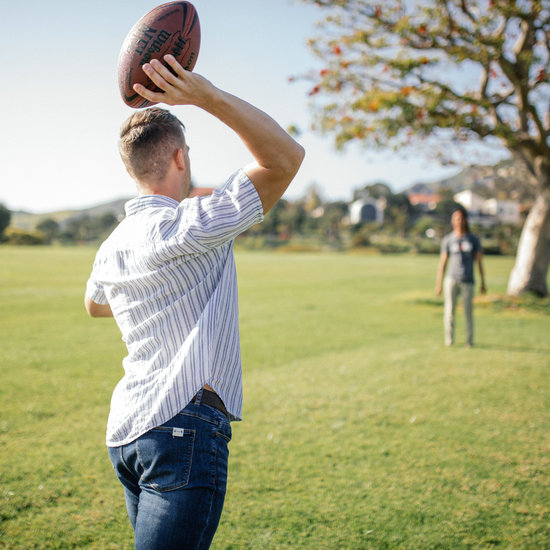D3 Football Study Provides New Insights into Student-Athlete Risk Perception and Communication

Ninety-nine percentof professional football players develop chronic traumatic encephalopathy or CTE—a neurodegenerative brain condition caused by repeated head trauma. Eighty-seven percent of football players at any level exhibit some form of the debilitative neurological illness. Thus, the stakes for athletes playing this immensely popular but physical game extend beyond the gridiron to their daily life, often long after they’ve stopped playing. So, unless one is guaranteed to profit from this costly sport, why play it?

Colin Storm, an assistant professor of communication at Seaver College, gained insight into this question by studying Division III football players and their concept of brotherhood.
“This study can help identify how people in high-risk situations communicate and talk about the specific risks associated with their sport,” says Storm. “It is vital that we understand the spoken and the unspoken language among teammates regarding risk perceptions and behaviors. I believe that this project will ultimately be a powerful tool capable of helping coaches, athletic trainers, and the student-athletes themselves.”
Storm chose to focus on NCAA Division III football players due to the limited incentives offered to these athletes. While NCAA Division I and Division II competitors stand to profit from their performance with either a scholarship, sponsorship, or both, Division III participants are not likely to be compensated for their athletic ability. Moreover, Division III football players rarely go on to play professionally, meaning they choose to play football with little hope of career advancement. Given such narrow benefits, Storm wondered what kept this specific demographic of athletes on the field as opposed to in the stands.
Throughout the course of the study, which involved six Division III schools, he found that D3 athletes go through two different phases of evaluation to determine whether they will compete. Phase one occurs just after high school, prior to athletes joining a college football team, while phase two takes place after the initial collegiate season. Almost half of Division III football players quit the sport after their first year.
Athletes who choose to continue playing football subsequent to these two assessment periods elect to do so in order to maintain their place in the “brotherhood,” an unofficial term signifying competitors committed to their group of teammates. Although brotherhood, or other family-oriented language, is typically considered a positive thing, Storm found that, in the context of football, such terms can have both constructive and detrimental effects.
“A brotherhood can be both good and bad,” explains Storm. “Student-athletes expressed that their brotherhood was important to them for accountability. But can it also be toxic? If the brotherhood leads to peer pressure and expectations to sacrifice one’s body and future, then I think it can be potentially harmful.”
Storm cites how numerous participants revealed that their football teams refused to use the term “concussion” in group discussions. Similarly, he found that some programs differentiated between the terms “hurt” and “injured” when determining an athlete's health status. This distinction has the potential to push student-athletes back on the field before they’ve returned to full strength.
Communication choices such as these illustrate how the language used within team settings can affect participants. Storm, through his research, aims to shine a light on this concept and develop useful tools to reinforce transparency.
“As we learn more about student-athlete language,” he says, “our hope is to create more effective training and programming for them as they identify and talk about high-risk situations.”